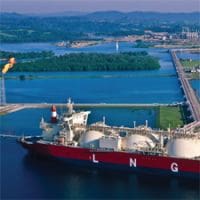The Problem
New mining techniques such as hydraulic fracturing (or “fracking”) and horizontal drilling have led not only to major increases in U.S. natural gas reserves, but also to considerable pricing disruptions in the global natural gas marketplace. With U.S. prices lower than those abroad—often by a factor of five or six—American companies have appealed to the U.S. Department of Energy for approval to export liquefied natural gas (LNG).
The Proposal
As policymakers and energy experts assess the LNG production landscape, a range of immediate and longer-term, as well as local and global, factors should be weighed. A robust analysis should be performed around six key dimensions: macroeconomic (e.g., output, job creation, trade balance), distributional, oil security, climate change, foreign and trade policy, and local environment.
Abstract
A surge in low-cost U.S. natural gas production has prompted a flurry of proposals to export liquefied natural gas (LNG). A string of permit applications are now pending at the Department of Energy (DOE), and more can be expected; lawmakers are also debating the wisdom of allowing LNG exports. This paper proposes a framework for assessing the merits of allowing LNG exports along six dimensions: macroeconomic (including output, jobs, and balance of trade), distributional, oil security, climate change, foreign and trade policy, and local environment. Evaluating the possibility of exports along all six dimensions, it finds that the likely benefits of allowing exports outweigh the costs of explicitly constraining them, provided that appropriate environmental protections are in place. It thus proposes that the DOE and the Federal Energy Regulatory Commission (FERC) approve applications to export natural gas. It also proposes steps that the United States should take to leverage potential exports in order to promote its broader trade and foreign policy agendas.




